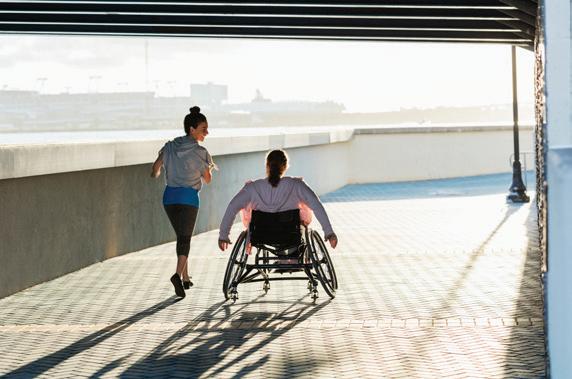
1 minute read
Stay ActiveDespite Adversity
With Adaptive Fitness
Human ingenuity has created nearly unlimited opportunities for people to continue playing their favorite sport or pursuing fitness activity, or take up a new one, after becoming disabled.
Also, it becomes more important than ever to maintain our level of physical activity to protect our heart, brain and every other kind of element of health in the face of these new challenges.
Here’s how we can get started.
Do What You Already Love
If you love cycling but pedaling on two wheels is no longer doable, consider a recumbent bicycle that places the rider in a laidback, feet-forward position for greater comfort and speed, though safety must stay top of mind.
They can be mobile or stationary, have three or four wheels for added stability, and some are propelled by the arms. Some can even be used as mountain bikes.
There are so many more options out there from golf carts that assist with standing, hockey played on sleds and walking poles for hiking.
EXPAND YOUR HORIZONS
This also can be a great time to move beyond your comfort zone and try something that’s always intrigued you. If you’ve always tended to skimp on your strength training you can explore weight training, which already incorporates a host of equipment at fitness stations to allow people of all abilities to lift heavier payloads.
Water skiing, horseback riding and even rock climbing can all be modified for different skills, as well as the more familiar wheelchair basketball and racing.
Find Your Tribe
Anyone with limited mobility or a disability has multiple resources in Greater Prescott to turn to, including the New Horizons Disability Empowerment Center in Prescott Valley (www. nhdec.org), which has an Adaptive Fitness Center and offers sports like wheelchair tennis and wheelchair basketball.









